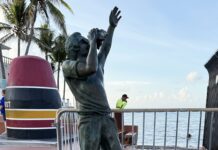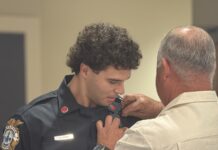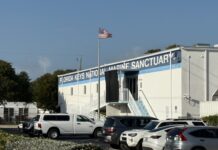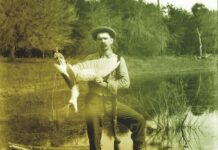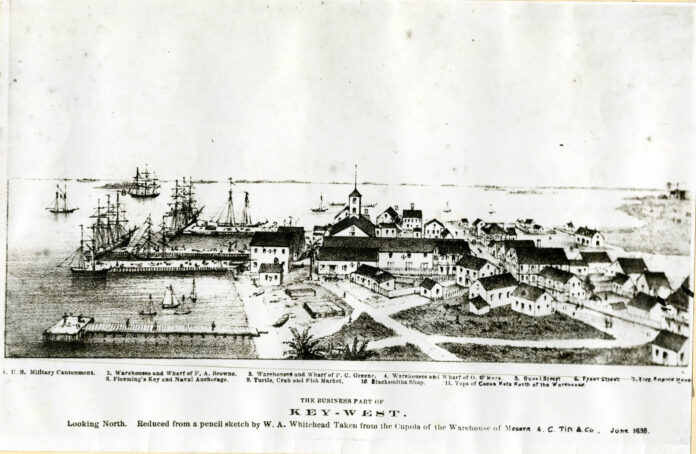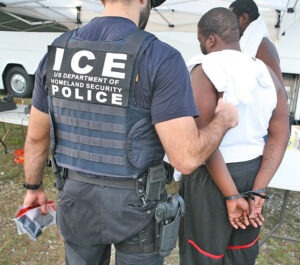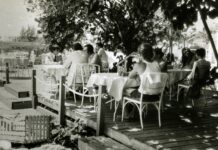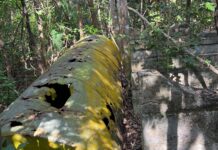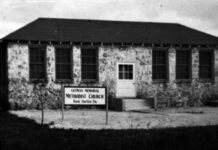William Whitehead is not the namesake of Key West’s Whitehead Street. He is, however, the man who named it. The namesake Whitehead was William’s older brother, John.
John Whitehead was introduced to Key West by accident. While pursuing business interests between ports along the Gulf of Mexico and those on the eastern seaboard, he had seen the island on many occasions. While the ships on which he sailed routinely passed Key West, they did not stop. Then, on one trip, while sailing between Mobile, Alabama, and New York City, the ship he was traveling wrecked while attempting to navigate the Straits of Florida.
When wrecking crews arrived on the scene and salvaged any cargo they could, they transported the passengers, crew, and Mr. Whitehead to Key West. After he arrived, Whitehead explored the island.
It was 1821. Lt. Mathew Perry, commander of the U.S. schooner Shark, had not yet sailed up to the island, planted the American flag on its rocky shore, and declared it a U.S. territory. While spending time on the island and waiting for a ship to sail him elsewhere, he took note of Key West’s ample, natural harbor and the island’s convenient location along the shipping lanes. Every merchant ship traveling between New Orleans and the eastern seaboard sailed past.
Whitehead relayed his observations to a friend named John Simonton, who went on to buy the island. When the Florida territories were still under Spanish rule, the Spanish governor of Florida, Don Juan de Estrada, deeded Key West to Juan Pablo Salas “in consideration of the several services rendered by him at different times, much in the Royal Artillery Corps stationed at this fort, as well as the services rendered voluntarily and without pay at the office of secretary under your administration.”
After West Florida and East Florida, which included the Florida Keys and the Florida Reef, became American territories, all property transactions occurring during Spanish ownership were recognized by the U.S. government if supporting documentation was provided. Only a handful of islands in the Florida Keys fell into this category. One was Key West, deeded to Juan Pablo Salas in 1815.
The story, up until this point, seems pedestrian. It is about to be interjected with some Key West color because Juan Pablo Salas made a conditional sale of the island to an attorney named John Strong and then sold it a second time. On Jan. 19, 1822, Salas also sold Key West to John Simonton for the tidy sum of $2,000.
Strong, the attorney, transferred his claim to the island to John Geddes of Charleston and further complicated the growing list of real estate transactions. Simonton, too, sold Key West property – though not the same way Strong did. Unlike Strong, Simonton sold three one-quarter shares of the island. He sold one parcel to John Warner and John Mountain, one to John Fleeming, and one to John Whitehead. Warner and Mountain later transferred their share to Pardon Greene. (On May 23, 1828, John Simonton was declared the island’s legal owner.)
John Whitehead, owner of a one-quarter interest in Key West, introduced his younger brother, William, to the island. Both Whiteheads would leave their impressions on the island. John lived there for about eight years. William arrived on the island in 1828 and stayed for about a decade.
Like his older brother, William played a significant role in the development of the community, both civically and politically. It was William Whitehead who, in 1829, was hired to complete the first official survey of the island, mapping the island in a grid-style layout that created and named many of the streets still recognized today — including Whitehead Street.
Whitehead’s survey platted the island equally among the island’s four owners: John Simonton, Pardon C. Greene, John Fleming (originally spelled Fleeming), and Whitehead’s older brother John.
The younger Whitehead did more than map the island; he was also appointed collector of customs and, in 1830, was in charge of Key West’s port of entry. William was also elected to the town’s council where, at a meeting in March 1831, he proposed that an Episcopal minister be brought in to become a full-time resident of the island, one who would also be expected to open and operate a school.
At a council meeting a few weeks later, in April, he urged the city council to address the community’s general welfare by appointing a health officer. The younger Whitehead also considered himself something of a writer. Later in his life, he would pen his “Reminiscences of Key West,” which ran serially in the Key West newspaper Key of the Gulf in 1877.
Whitehead’s work provided a peek into Key West’s early years as a growing community.
He would write some of the island’s earliest histories, including firsthand accounts of the good, if not slightly awkward, Dr. Henry Waterhouse. Whitehead wrote of the doctor: “Brought from his northern home by ill-health, the figure he presented when brought to memory is in keeping with that fact. A slightly framed individual was he, with a sallow complexion and cadaverous expression of countenance, having a peculiar mouth considerably modified from its natural expression by a set of false teeth, which he was wont to assure his friends were manufactured from ‘a tusk of the hippopotamus or sea horse.’”
Waterhouse was said to possess a vast book collection, the largest on the island, and he could often be seen seated on the porch of a small wooden house facing Whitehead Street near Clinton Place. When speaking, his erudition and flawless diction earned him the nickname “Dr. Syntax.”
Next week, we will explore more of the Dr. Waterhouse story.

